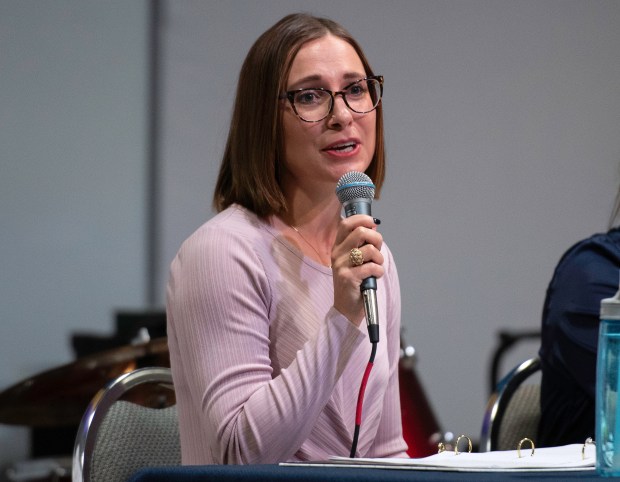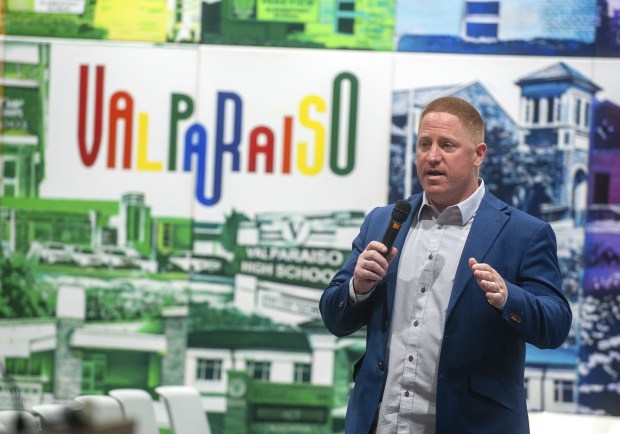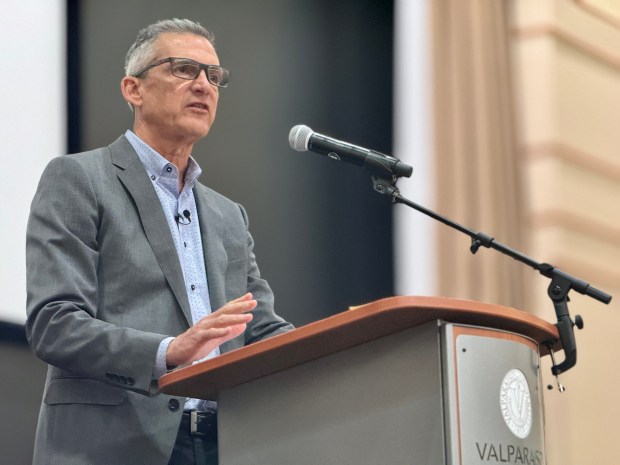A recent symposium on housing in Valparaiso is only the start of the process, city officials said, as the community addresses a need for what Mayor Jon Costas called “more attainable housing units.”
The May 29 symposium, with the consultant Capital Stacker founder Heather Presley-Cowen, made a broad suggestion for adding housing over the next five years for the market potential for what one chart called “affordable/workforce and market-rate” housing.
The figures call for a mix of rental apartments, condominiums, townhomes and single-family residences. Rental apartments, followed by detached homes, take up the brunt of the units, with up to 195 units and 149 units, respectively, in each of the next five years. The rest of the units are condominiums and townhomes.
“I’m glad we’re having these conversations because housing is a complex issue and every community is different,” said Costas, who was part of a 19-member committee put together by Councilman Robert Cotton, D-2nd, who is spearheading the effort.
“What as a city can we do?” Costas said, adding the city has a balance of housing and is a growing community. “We have a couple challenges, including affordability all around, but particularly in more attainable housing units.”
Because the city is a desirable place to live, that’s driving up the cost of housing, Costas said. Zoning and unified development ordinance changes can help.
“We’re also looking to increase density where it’s appropriate,” which could include a mix of types of housing units within a development, he added. Existing mixed housing can be found in the Aberdeen and Keystone subdivisions.
“Attainable single-family homes is probably the greatest need for our community because the market has everything over $350,000 covered,” Costas said.
Over the past decade, the city has undertaken several traditional housing studies to better understand the dynamics of the local housing market, Cotton said in a statement provided to the Post-Tribune, but the recent effort is a departure from past approaches.
“This time, we set out not just to study existing conditions, but to assess our city’s market potential for new housing development — specifically in the income range that has been largely abandoned by the private market: 60% to 120% of Area Median Income (AMI),” Cotton said in the statement.
Ellen Kapitan, pictured Thursday, October 5, 2023 at Living Hope Church. (Michael Gard / Post-Tribune)
The approach, said Council President Ellen Kapitan, D-At-large, who also is serving on the committee, isn’t focused just on rentals.
“We’re talking about house ownership, the ‘missing middle,’” she said. “For home ownership, there aren’t a lot of options” for would-be homeowners whose earnings fall within the AMI cited by Cotton.
For a four-person household in Porter County, that range would be from $48,650 to $76,500, according to market analysis information compiled by Zimmerman/Volk Associates, Inc. presented at the symposium.
“I believe in what we’re doing and it’s important to address, and we can only really do that by having a broad understanding of what’s going on,” Kapitan said.
Councilman Peter Anderson, R-5th, who attended the symposium, has an assortment of concerns about the process by which council members received the market analysis, among other details.

Valparaiso City Councilman Peter Anderson, R-5th, shown Tuesday, January 17, 2023. (Andy Lavalley for the Post-Tribune)
“This information was received by Councilman Cotton and then he met with citizens in private before the information was released to the rest of the council,” Anderson said. “That’s a transparency issue.”
The market analysis, he said, has implications for public safety, the school system and property values.
“What the study suggests, that’s a big deal,” he said.
Council members often take on projects and he’s comfortable with Cotton taking the lead on housing, but things seem to have moved beyond that scope and into secrecy, Anderson said, questioning who is on the steering committee and what they have discussed in their meetings.
“It doesn’t instill confidence in me that we’re going to have broad public discussion” which is needed, he said.
Sitting in on the symposium, Anderson said, it was “very clear” what direction the city was moving in, and he doesn’t know whether the council as a whole will talk about it. He’s also concerned that two of the drivers of affordable housing are density and land donated by the city.
“That’s ultimately going to be the point. It’s a government-subsidized thing,” he said.
Cotton said Costas, through the board of works, contracted with Zimmerman/Volk for the housing market analysis, for $35,000. That included additional consulting services, like public outreach and housing symposiums.
An initial review of the findings was presented to an informal steering committee composed of approximately 19 individuals, Cotton said, which included Costas; nonprofits, a member from the Northwestern Indiana Regional Planning Commission; board members from the nonprofit Paradise Homes; and three members from the council — Cotton, Kapitan, D-At-large, and Councilwoman Barbara Domer, D-3rd.
Access to the market potential analysis, Cotton said, was made available to any interested council members, and “in compliance with Indiana’s Open Door Law, no more than three council members participated in the initial due diligence phase.”
Valparaiso doesn’t have a formal housing policy, Cotton said, nor is the city in the business of building homes.
“Rather, our objective is to stimulate the market — to spark private and nonprofit activity in segments where housing production has stalled,” he said. “By identifying where potential exists and forging partnerships with mission-driven organizations, we believe we can lay the groundwork for a sustainable, community-based housing delivery system.”
The city’s plans, Costas said, are still “amorphous,” with a lot of questions that still need to be answered, including who a developer might be and whether they would work with a nonprofit.
Paradise Community Homes, with city administrator Bill Oeding as its president, formed last year to build small homes for under $300,000, Costas said. Housing efforts also are being tackled by longstanding nonprofit Project Neighbors, among others.
“These are not competing groups but it boils down to the specifics and with the symposium, the specifics are just coming together,” Costas said.
alavalley@chicagotribune.com





